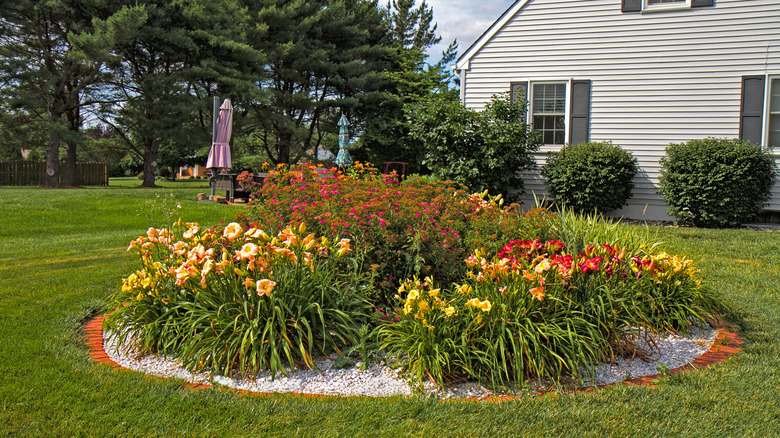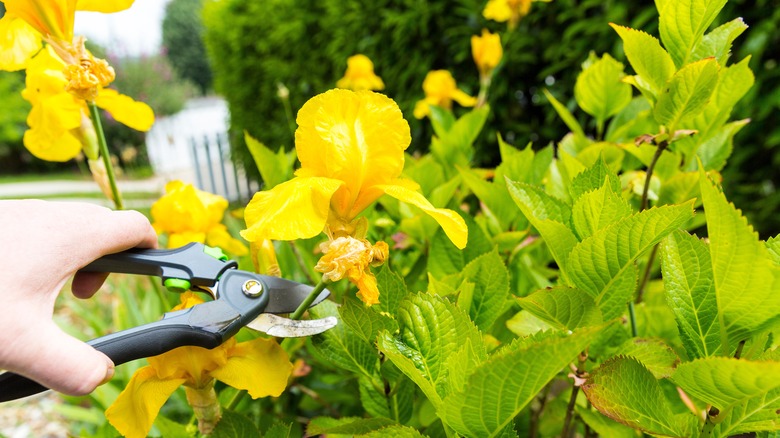Gardening Mistakes That Can Hinder The Growth Of Your Daylilies
In the world of gardening, growing daylilies can be a true joy. These perennial plants bring a burst of color to any garden with their vibrant blooms. However, even these hardy flowers can suffer if not properly cared for. As you cultivate daylilies, there are several critical mistakes to avoid that can hinder their growth. The list includes improper lighting and neglect of disease control. In fact, as with any plant, there's a lot to consider when caring for daylilies — from the microclimate of your garden to the type of soil, you'll need a tailored care routine that not only ensures the health of your daylilies but also maximizes their aesthetic potential.
Daylilies, originating from Asia and central Europe, have become a staple in gardens worldwide. Their name, Hemerocallis, comes from the Greek words for "beauty" and "day," signifying the beauty each flower holds for just a day. Despite their fleeting individual blooms, daylilies can bloom prolifically throughout a season. And let's not forget the thousands of varieties, which makes caring for them even more complicated, especially if you have more than one type in your garden. So, there's a lot to consider here. While these plants are adaptable and can thrive in various conditions, certain practices can maximize their health and blooming potential. It helps to know exactly what you're doing wrong (and right) so that you can customize your care methods accordingly.
Improper lighting
Let's talk about lighting, a fundamental aspect of caring for daylilies. These beautiful perennials are somewhat like solar panels — they need the right amount of sunlight to truly thrive. The rule of thumb is to give your daylilies about six hours daily. And it needs to be in direct sunlight. However, this isn't a one-size-fits-all situation.
The amount of light your daylilies require can vary based on your climate and the specific variety you're growing. In cooler climates, maximizing sunlight is key. Daylilies in these areas benefit from full sun exposure to encourage robust growth and vibrant blooms. But if you're gardening in a hotter region, your daylilies may appreciate some afternoon shade, which will help preserve their natural color. It also helps shield them from the intense heat, which can stress the plants and lead to issues like leaf scorch. If you've got varieties that fare better with a bit of shade, find a spot that receives some afternoon cover.
Generally speaking, when plants don't get enough light, you might see them reaching for the sun, growing taller and thinner as they seek out more rays. This can lead to weaker plants and fewer blooms. Conversely, too much direct, intense sun in hot climates can cause the leaves to dry out or burn. Balancing light for your daylilies is a bit like finding the sweet spot.
Neglecting disease control
While daylilies are generally robust and disease-resistant, they are not immune to all ailments. Common issues with daylilies include rust, which appears as orange spots on leaves. More serious problems like soft rot, which affects the base of the plant, can be particularly challenging. Unfortunately, many gardeners ignore or are unaware of the importance of disease control. The key is not just to react to diseases but to prevent them from taking hold in the first place. For example, choosing disease-resistant varieties like the Betty Bennet is a smart first step for disease prevention. Research the types of daylilies you're interested in and select those known for their robustness against common diseases. This doesn't mean they're invincible, but they'll have a better chance at resisting problems.
At the first sign of disease, take action. If you remove affected leaves or parts of the plant to prevent the disease from spreading, dispose of this material properly — not in your compost pile, where it can linger and reinfect plants. In some cases, using a fungicide might be necessary. Always follow the product's instructions for application. But don't rely solely on chemical solutions. Improving the environmental conditions around your daylilies can go a long way. Ensure good air circulation around your plants and avoid overhead watering, which can leave foliage wet and more susceptible to fungal diseases. Also, maintain good garden hygiene. Keep your daylily bed clean and free of plant debris, as decaying plant matter can be a breeding ground for diseases.


